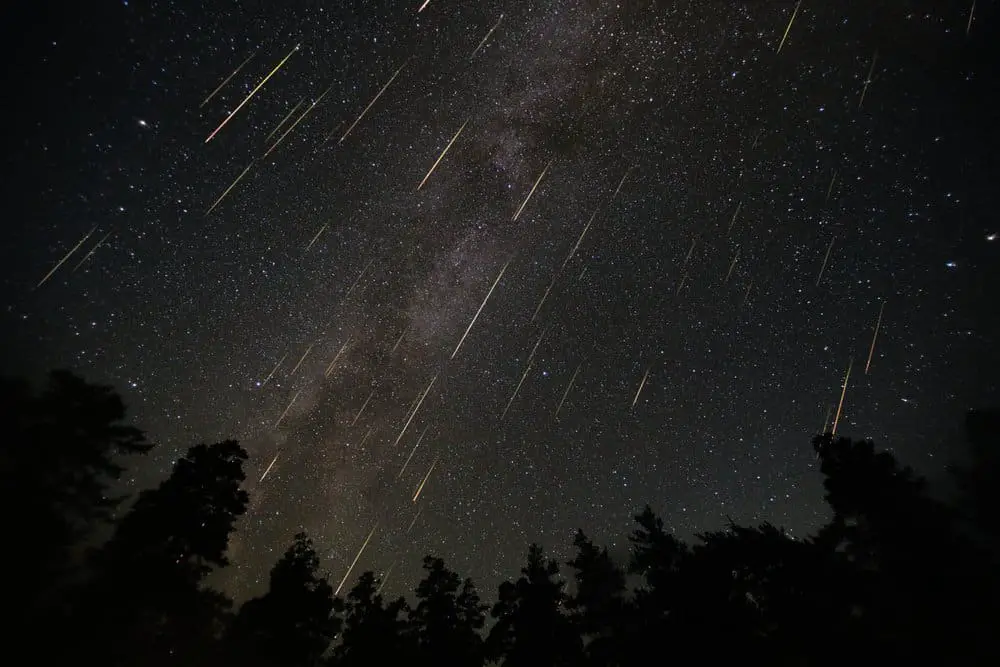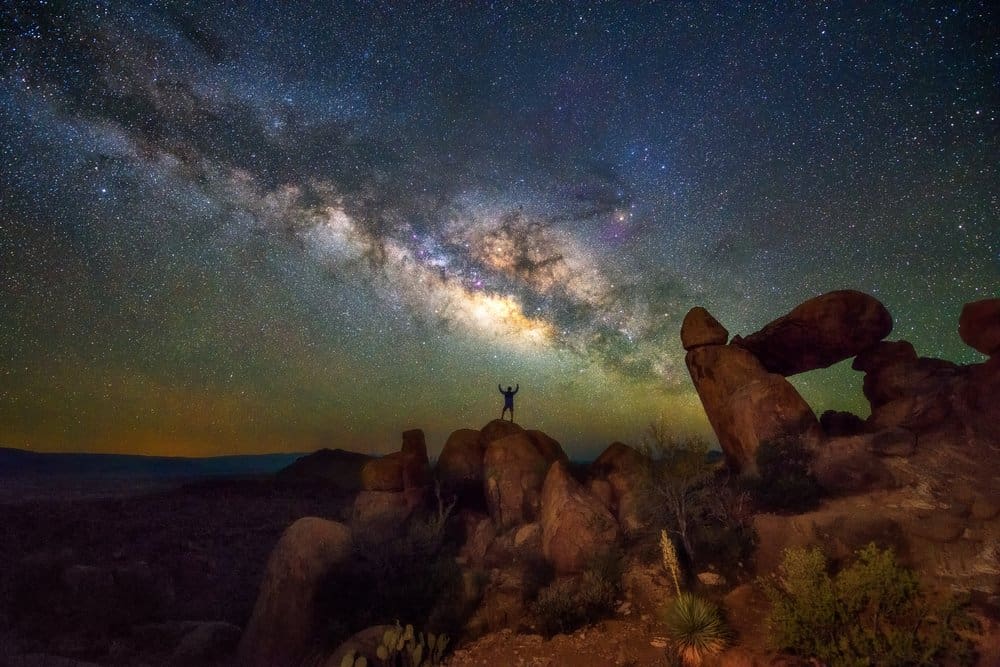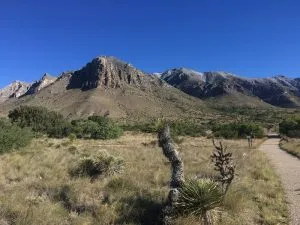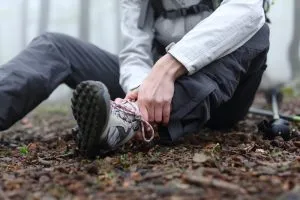Hiking During a Meteor Shower: An Amazing Late Night Experience

There’s nothing quite like hiking during a meteor shower. The air is crisp, the stars are bright, and you might even see a shooting star or two. It’s honestly one of the most amazing things you can experience.
If you’re planning on hitting the trails during a meteor shower, this article has everything you need to know.
Quick Links
Preparation For Your Hike
First, check the weather forecast and make sure that the skies will be clear on the night of the shower. You don’t want to hike all the way up a mountain only to find that it’s cloudy at the top. I mean, at least you could say you got a good workout in, right?
Next, choose a trail that will give you a good view of the night sky. If you can, find a spot that’s away from city lights. The darker the sky, the better you’ll be able to see the meteor shower. Also, try and choose a trail that you’re already comfortable with so you don’t get lost in the dark.
Most national parks have dark sky areas where you can view the stars. To find a dark sky area near you, check out this map from the International Dark-Sky Association.
Another factor to consider is the moon, believe it or not. If the moon is full or nearly full, it will be harder to see the meteor shower. You might want to choose a different night to hike if the moon is bright. However, moonlight won’t be near as bright as city lights (since you’re closer to the city than the moon), so it’s not a deal-breaker.
Lastly, make sure you know when the meteor shower is scheduled to peak. This information is readily available online, and it will help you plan your hike around the best time to see the most shooting stars.
What To Pack

Now that you’ve chosen a date and a trail, it’s time to start packing. Here are some things you’ll need for your hike:
- A headlamp or flashlight
- Extra batteries
- Binoculars
- Snacks and drinks
- A blanket or sleeping bag
- A chair or stool (optional)
- Your Camera!
There’s a lot of debate between headlamps and flashlights, but it really comes down to personal preference. If you like having your hands free, go with a headlamp. If you’re worried about dropping your light, go with a flashlight. Just make sure that whichever one you choose has extra batteries. Personally, I prefer headlamps for the fact that my hands are free, but to each their own.
Binoculars can help you see the meteor shower better, but they’re not necessary. If you have them, bring them along. Otherwise, just enjoy the show with your naked eyes.
As for snacks and drinks, pack whatever will make you comfortable. I like to bring some trail mix and water, but you might want something more substantial like sandwiches or energy bars. Just make sure you have enough to last the entire night because you never know how long you’ll be out there.
A blanket or sleeping bag will keep you warm during the cooler hours of the night. If you’re planning on staying out all night, you might want to bring a chair or stool so you can sit comfortably.
And finally, don’t forget your camera! Meteor showers are beautiful, and you’ll want to remember the experience. I have a Canon Rebel T7 and strongly vouch for it. To capture the night sky you’ll need to make a few modifications, but we’ll cover that in a bit.
What Is the Best Time to Observe a Meteor Shower?
When you’re out on the trail, there’s not much to do except look up and enjoy the show. Meteor showers are best seen in the early morning hours, so be prepared for a late night. If you get tired, take a nap or read a book until you see the first shooting star.
As long as you have a clear view of the sky, you should be able to see the meteor shower. The best time to view will be during the peak, but you might see meteors before and after the peak as well.
How To Photograph A Meteor Shower During A Hike?
As I said before, I have a Canon Rebel T7 and I love it. It’s a great beginner DSLR, and it’s fairly inexpensive. That being said, any DSLR or mirrorless camera will do the trick.
To get started, you’ll need a tripod, a remote shutter release, and a wide-angle lens. I recommend a 22mm lens, but anything in the range of 1-24mm will work. Most tripods are collapsible and portable, so you shouldn’t have too much trouble lugging them around during your hike.
Once you have your gear, set up your tripod and attach your camera. If you’re using a remote shutter release, go ahead and connect it to your camera. If you don’t have a remote shutter release, you can use the self-timer on your camera.
Next, set your camera to manual mode and adjust the following settings:
- ISO: 800-1600
- Aperture: f/2.8 or wider
- Shutter speed: 15-20 seconds
(Note: These are the settings that work well for me, you may have to play around with them. Read this article from digitalcameraworld.com for more information.)
Once you have your camera settings dialed in, pointed at the sky, and focused on infinity, it’s time to start taking pictures. Press the shutter button and let the camera do its thing.
You might need to experiment with the shutter speed to get the desired effect. I like to start with a 10-second exposure and work my way up from there. If you’re using a remote shutter release, you can take multiple pictures in quick succession. Just make sure you don’t overlap the exposures.
Can You See a Meteor Shower with Light Pollution?
Yes, you can still see a meteor shower with light pollution, but it won’t be as spectacular as if you were in a dark location. That’s why I love hiking out to remote areas to catch one. If you live in a city or near any source of light pollution, I recommend finding a spot that’s away from the lights. Again, you can check out the map from the Dark-Sky Association, it’s probably your best bet.
Can a Meteor Shower Be Seen from Anywhere?
Technically, yes. A meteor shower can be seen from anywhere on Earth, as long as it’s during the right time of year. However, some meteor showers are better seen in certain parts of the world. For example, the Perseids are best seen in the Northern Hemisphere while the Geminids are better seen in the Southern Hemisphere.
And even then, they might not be visible depending on the weather conditions.
To have the best chance of seeing a meteor shower, you need to be in an area with clear skies and little to no light pollution. The further away you are from the city lights, the better.
Is It Safe to Go Hiking During a Meteor Shower?
Yes, it’s safe to hike during a meteor shower. Your main risks will come from the fact that you’re going to be doing some night-time hiking.
If you’re hiking in an area with wildlife, be sure to make noise and keep your eyes peeled for animals. It’s also a good idea to hike with a partner or group so you can keep an eye on each other.
Make sure you have a headlamp or flashlight with fresh batteries and be aware of your surroundings at all times. Other than that, just use a bit of common sense and you’ll be fine.
As far as the meteors themselves go, you don’t need to worry about them. They’re tiny pieces of space debris that burn up long before they reach the ground. However, there have been instances of people being hit by falling meteorites, but it’s incredibly rare, and none have been fatal.
What Is the Best Park in The United States to Watch a Meteor Shower?

There are a lot of great parks in the United States to watch a meteor shower. However, I’m going to give you my biased answer and go with Bid Bend National Park in Texas.
I’ve had the incredible opportunity to go stargazing in a lot of different parks, but there’s something special about Big Bend. Maybe it’s the fact that it’s so remote, or maybe it’s the lack of light pollution – Big Bend has the least light pollution of ANY other national park in the lower 48 states.
Big Bend is an incredible place to see the night sky. The Milky Way is so bright that it casts a shadow, and you can see thousands of stars with the naked eye. If you’re looking for an amazing place to watch a meteor shower, make your way to Texas and head to Big Bend.
Conclusion
So there you have it, everything you need to know about hiking during a meteor shower. Get out there, stay safe, sit back and enjoy the show.
Happy hiking & stargazing!






